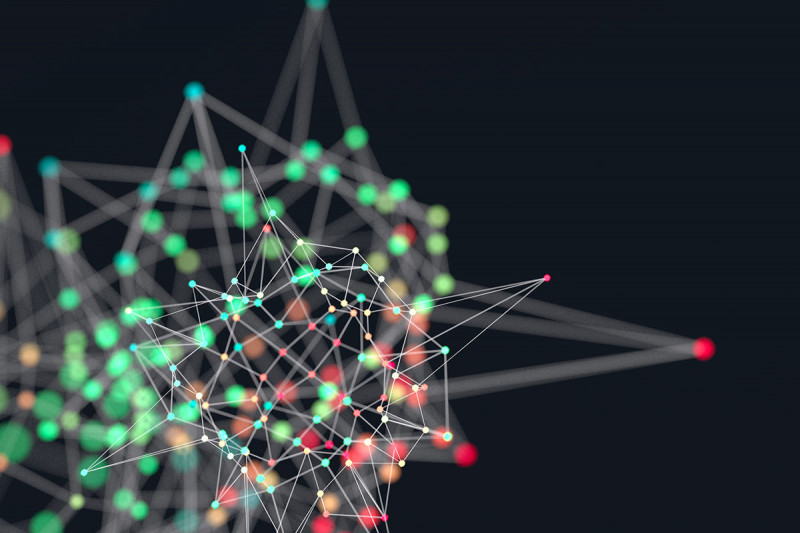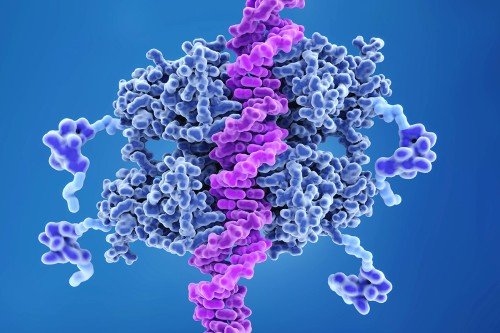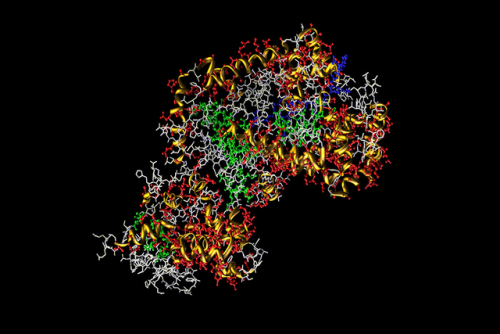
Many medical breakthroughs blossom from the seeds of basic science research. This past year, Memorial Sloan Kettering scientists made fundamental discoveries in several basic science fields, including cell biology, molecular biology, developmental biology, and more. Much of this work was made possible by large and small philanthropic donations, which allow researchers to pursue innovative ideas and take risks. Below are some of our favorite science stories of the year.
1. Proteins that practice origami
How proteins reach individual locations within a cell is still mostly a mystery. This year, researchers in the Sloan Kettering Institute lab of molecular biologist Xiaolan Zhao solved part of the puzzle. A protein with repeats of a certain motif, called the BRCT domain, folds into the perfect shape for transporting cargo to the proper destination.
2. An unexpected role for cancer’s most famous molecule
More than 50% of all cancers contain a mutation in the p53 gene, sometimes dubbed the “guardian of the genome.” This year, a team of scientists from the SKI labs of Scott Lowe and Lydia Finley reported that they discovered a previously unrecognized way that p53 works to prevent cancer: by altering cell metabolism.
3. One gene, up close and personal
For 50 years, researchers all over the world have studied how genes are transcribed into messenger RNA. But nobody had been able to directly observe how gene transcription happens inside a live cell — until this year. SKI structural biologist Alexandros Pertsinidis found a way to peer inside living cells and observe gene transcription happening in real time.
4. A new immune cell subset
The immune cells called dendritic cells are the gatekeepers of immune responses. This year, SKI immunologist Alexander Rudensky and colleagues discovered two previously unknown dendritic cell subtypes. Their opposing actions could help explain some long-standing mysteries about the immune system, such as why some people with cancer respond to immunotherapies while others do not.
5. New prostate cancer subtype defined
About 12% of men with prostate cancer have a mutation in the FOXA1 gene. MSK physician-scientist Charles Sawyers and colleagues have provided clues into how these mutations cause cancer. In experiments done in mice, they showed that the most common FOXA1 mutations produce a version of a protein that is unusually effective at opening up regions of chromatin.
6. A fiery anthrax breakthrough
The deadly bacterium that causes anthrax can sicken farm animals and has been used as an agent of bioterrorism. Using the tools of chemical biology, SKI chemical biologist Daniel Bachovchin and colleagues made important discoveries about how anthrax proteins trigger a fiery form of cell suicide called pyroptosis.
7. Cancer has a garbage problem
Cancers cells consume lots of nutrients and produce lots of waste. SKI chemical biologist Yael David found that some waste products cause a type of damage called glycation. The damage affects histones, the proteins around which DNA is spooled in chromosomes. Understanding the damage caused by glycation has far-reaching implications for the treatment of many diseases with known links to modern lifestyles, such as diabetes and cancer.
8. Feed a cold, starve a glioma?
Glioblastoma tumors are one of the most difficult brain cancers to treat. SKI developmental biologist Luis Parada and colleagues identified a compound that kills glioblastoma cells in a way that’s completely different from earlier treatments. It starves glioblastoma cells of the energy they need to reproduce.
9. A rectal cancer model that behaves like the real thing
Rectal cancer has been hard to study because there have been no reliable models of the disease. This year, physician-scientists at MSK devised one. The approach J. Joshua Smith and his colleagues took was to create something called a tumor organoid. It is essentially a miniaturized version of a rectal tumor.
10. Maria Jasin, Shaw Prize winner
SKI molecular biologist Maria Jasin received this year’s prestigious Shaw Prize in Life Science and Medicine. In this Q & A, she recounts the thrill of making her award-winning discovery related to double-strand DNA breaks and homologous recombination. “It was clear to me from the beginning that this would be a powerful way to do gene modification,” she says.












